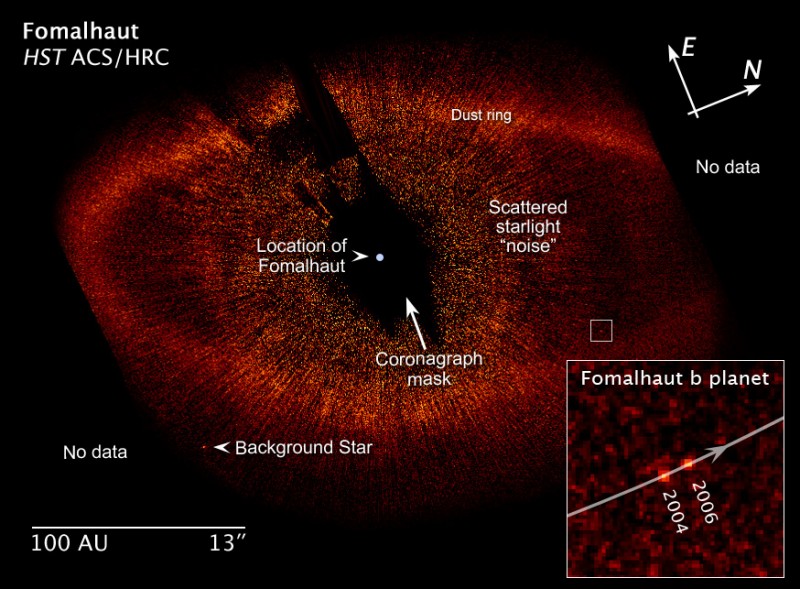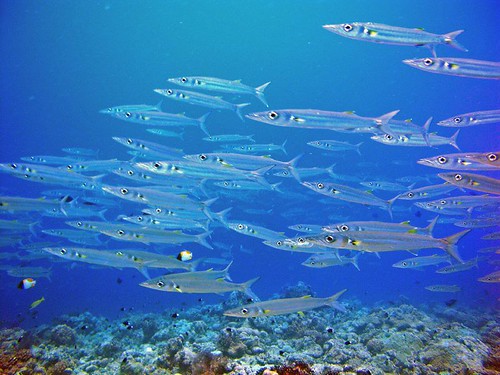No, it's not quite Thanksgiving yet, but that doesn't mean we don't have an abundance of extraordinary science to be thankful for. Here are just a few of the wonders spilling from our horn of plenty.
 From afar, the first optical photos of an exoplanet
From afar, the first optical photos of an exoplanetAfter an eight-year quest for images, a US astronomer using a camera aboard the Hubble space telescope has snapped the first picture of a planet outside our solar system.
Astronomer Paul Kalas captured the first visible-light images of a planet some 25 light years from our solar system using a camera mounted on the Hubble telescope.
Likely similar in mass to Jupiter, the planet is orbiting the star Fomalhaut in the southern constellation Piscus austrinus at a distance of about four times the distance between Neptune and our sun, said the study's lead author Kalas, with the University of California, Berkeley.
The research appears in the November 14 online edition of the review Science.
The planet, dubbed Fomalhaut b, could have a system of rings similar in dimension to what Jupiter had in the past, before dust and debris joined together to form its four main moons.
(Image from Astronomy Picture of the Day)
And, as Phil Plait at the Bad Astronomy blog says, there's more:
That image is the first to directly show two planets orbiting another star!
It’s a near-infrared image using the giant Gemini North 8 meter telescope. Like in the Hubble image, the star’s light has been blocked, allowing the two planets to be seen (labeled b and c).
The star is called HR 8799. It’s a bit more massive (1.5 times) and more luminous (5x) than the Sun, and lies about 130 light years from Earth. The planets in this picture orbit it at distances of 6 billion km (3.6 billion miles) and 10.5 billion km (6.3 billion miles). A third planet, not seen in this image but discovered later u
sing the Keck 10 meter telescope, orbits the star closer in at a distance of 3.8 billion km (2.3 billion miles).
So there it is. The first ever family portrait of a planetary system.
One thing that makes these particular planets a bit easier to find than usual is that they are young; HR 8799 and its children are only about 60 million years old. That means the planets are still glowing from the leftover heat of their formation, and that adds to their brightness. Eventually (in millions of years), as they cool, they will glow only by reflected light from the star, and be far harder to see. Fomalhaut b, in the Hubble image, is much older (200 million years), and glows only by reflected light from Fomalhaut. If it were much smaller or dimmer (or closer to the blinding light of the star), we wouldn’t have been able to see it at all.
These images were basically science fiction just a few years ago. Now they are fact. We have an optical picture of a planet orbiting another sun-like star, and a picture of two planets orbiting another star.
Wow. Just wow.
Wow, indeed.
Time to return to Earth, away from giant planets, and delve into the world of the tiny:
The Nanotech Antidote to Food Poisoning ...an experimental drug, developed by David Bundle and colleagues at the University of Alberta, could win the emergency room battle.
...an experimental drug, developed by David Bundle and colleagues at the University of Alberta, could win the emergency room battle.
This week in the Proceedings of the National Academy of Sciences, Bundle described special polymers that can remove toxins from the bloodstream. Doctors could inject the nano-medicine into gravely ill patients to protect them from damage caused by bacteria such as hemolytic-uremic syndrome.
Each of the stringy saviors, called PolyBAIT, is decorated with carbohydrates that act like barbs. Those little hooks can sn
ag bacterial poisons and then stick them to an immune system protein.
The protein and PolyBAIT disar
m each toxin molecule, and then drag them out of the bloodstream.
Bundle and others have been trying to deactivate parasite poisons for quite some time, but their earlier antidotes did not work well on animals.
Along with colleagues Pavel Kitov and Glen Armstrong, Bundle tested PolyBAIT on transgenic mice. When they gave a lethal dose of shiga toxin to their fuzzy research subjects, the new medication was able to save them.
Awesome.
We aren't the only ones who hold elections, it appears:
Fish Choose Their Leaders by Consensus
Just after Americans have headed to the polls to elect their next president, a new report in the November 13th issue of Current Biology, a Cell Press publication, reveals how one species of fish picks its leaders: Most of the time they reach a consensus to go for the more attractive of two candidates.
"It turned out that stickleback fish preferred to follow larger over smaller leaders," said Ashley
Ward of Sydney University. "Not only that, but they also preferred fat over thin, healthy over ill, and so on. The part that really caught our eye was that these preferences grew as the group size increased, through some kind of positive social feedback mechanism."
"Their consensus arises through a simple rule," said David Sumpter of Uppsala University. "Some fish spot the best choice early on, although others may make a mistake and go the wrong way. The remaining fish assess how many have gone in particular directions. If the number going in one direction outweighs those going the other way, then the undecided fish follow in the direction of the majority."
Majority rules, even under the sea.Could this explain why religious people see the world so differently from us?
Religion Alters Visual Perception
It might be clichéd to say that religious people see the world differently, but new research finds that Dutch Calvinists notice embedded visual patterns quicker than their atheist compatriots.
Culture has long been known to distort visual perception, says Bernhard Hommel, a psychologist at Leiden University in the Netherlands who led the new study.
For example, one previous experiment found that Asians tend to dart their eyes around a photograph, while North Americans fix on specific people.
To see if religious differences might skew perception, Hommel's team tested 40 Dutch atheist and Calvinist university students, who, religion aside, had similar cultural backgrounds.
On a computer screen, Hommel's team showed participants a large triangle or square made of either smaller triangles or squares. The volunteers had to focus on either the big object or its component shapes, and indicate whether they were square or triangular.
Both groups recognised the large shapes more quickly than small, embedded ones, but the Calvinists picked out the smaller shapes 30 milliseconds faster than atheists, on average - a small, but significant, difference.
This could reflect a greater focus on self than external distractions for Calvinists, says Hommel.
He suggests it may even be a cognitive consequence of their religion and speculates that Calvinists might be more inward looking than atheists because they have lived their whole lives with an emphasis on minding their own business.
(Image: the word "Ali" on the moon)
People have asked me what I'm giving thanks for this year. There are many things, but science is high on the list.










1 comment:
To me, that outline on the Moon looks like a scorpion. Those things really are Rorshach tests, aren't they?
Post a Comment